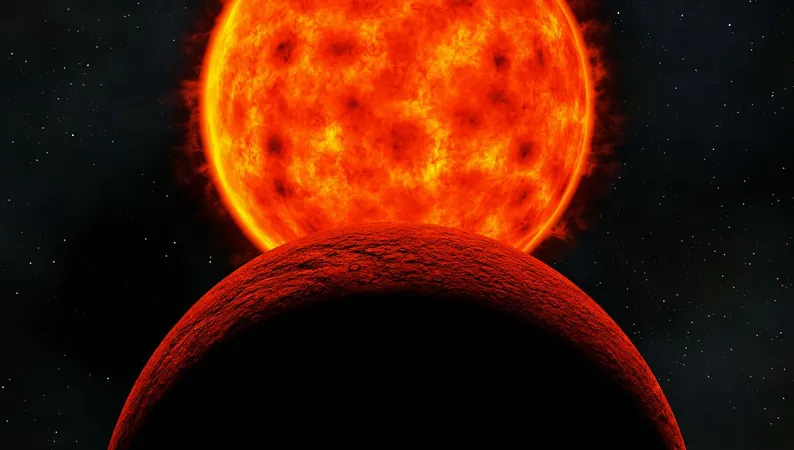
Unlocking the Secrets of an Ancient Orange Dwarf: Surprising Discoveries from Stellar Sounds
2025-05-08
Author: Ming
A Cosmic Symphony from 21 Light-Years Away
Astronomers have made a groundbreaking discovery about HD 219134, an orange dwarf star located 21 light-years from Earth. Not as hot or massive as our Sun, this chilling stellar giant has turned out to be an unexpected goldmine for scientists. Traditionally, the focus has been on larger and brighter stars, known for their lively internal activities that make their oscillations easier to detect—until now.
Listening to the Vibrations of a Star
Dr. Yaguang Li, the lead author and a researcher at the University of Hawaiʻi at Mānoa, likens the vibrations of a star to its own unique song. He claims, By listening to those oscillations, we can precisely determine how massive a star is, how large it is, and how old it is. Thanks to cutting-edge technology from the Keck Observatory, specifically the Keck Planet Finder (KPF), researchers have unveiled the hidden vibrations within HD 219134, revealing that this star is a staggering 10.2 billion years old.
Aging Stars: A New Way to Measure Time
Stars like HD 219134 don’t follow a simple aging pattern. Younger stars spin rapidly, but as they age, they tend to plateau, complicating age assessments based purely on spin rates. Dr. Li describes their findings as akin to discovering a long-lost tuning fork for stellar clocks—providing a crucial reference point to understand how stars spin down over billions of years.
Refined Measurements and Discoveries
The stellar sounds also revealed that HD 219134 is actually 4 percent smaller than previous starlight-based measurements suggested. This refinement allowed astronomers to better estimate the properties of at least five planets orbiting this ancient star.
Super-Earths: A Potential Home for Life?
Among these planets, two were confirmed to share a composition similar to Earth, albeit larger, earning them the title of super-Earths. The implications are profound—if life exists on these worlds, scientists will want to establish its age. Dr. Daniel Huber, a co-author of the study, states, When we find life on another planet, we will want to know how old that life is. Listening to the sounds of its star will tell us the answer.
Conclusion: The Future of Asteroseismology
This innovative approach to studying cooler and smaller stars not only broadens our understanding of our universe but opens new avenues in the quest for extraterrestrial life. As we fine-tune our instruments and techniques, who knows what other cosmic melodies await us?



 Brasil (PT)
Brasil (PT)
 Canada (EN)
Canada (EN)
 Chile (ES)
Chile (ES)
 Česko (CS)
Česko (CS)
 대한민국 (KO)
대한민국 (KO)
 España (ES)
España (ES)
 France (FR)
France (FR)
 Hong Kong (EN)
Hong Kong (EN)
 Italia (IT)
Italia (IT)
 日本 (JA)
日本 (JA)
 Magyarország (HU)
Magyarország (HU)
 Norge (NO)
Norge (NO)
 Polska (PL)
Polska (PL)
 Schweiz (DE)
Schweiz (DE)
 Singapore (EN)
Singapore (EN)
 Sverige (SV)
Sverige (SV)
 Suomi (FI)
Suomi (FI)
 Türkiye (TR)
Türkiye (TR)
 الإمارات العربية المتحدة (AR)
الإمارات العربية المتحدة (AR)